AMD AM1 Kabini Part 2: Athlon 5350/5150 and Sempron 3850/2650 Tested
by Ian Cutress on May 29, 2014 2:00 PM ESTSYSMark and Scientific Benchmarks
SYSmark 2014
SYSmark is developed by BAPCo, the Business Applications Performance Corporation, which includes in its current members Intel, Dell, Lenovo, Microsoft, Samsung, Sony, and Toshiba. The latest version of SYSmark, SYSmark 2014, uses the latest software packages from Adobe and Microsoft and meshes them together into a stringent testing package that can take a couple of hours to run. The end result gives marks for in office productivity, media creation and data/financial analysis sections as well as an overall result. SYSmark uses a standard office computer (an i3-4130 with a 500GB mechanical drive, 6GB DRAM, 1080p, integrated HD4400 graphics) to provide a benchmark score of ‘1000’, and all results are compared to this. Our testing runs the processors at 1080p with integrated graphics on an OCZ Vertex 3 240GB SF-2281 based SSD.
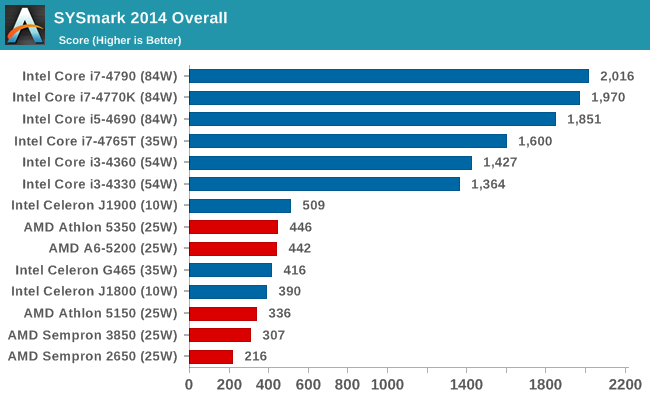
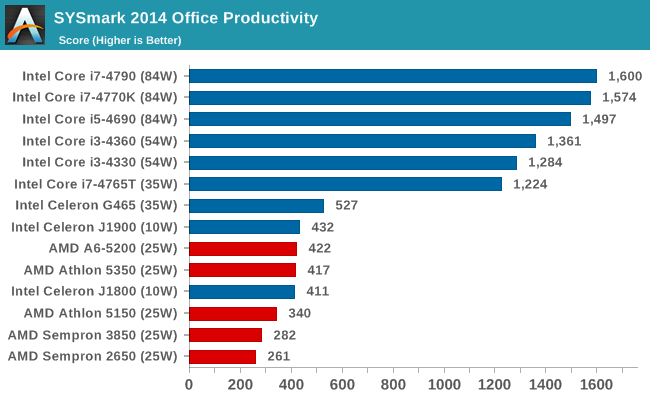
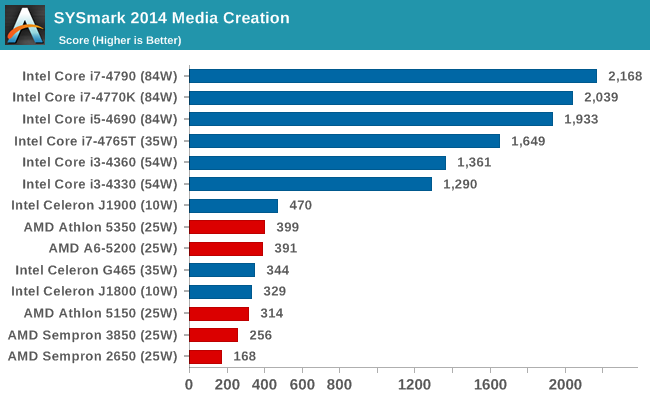
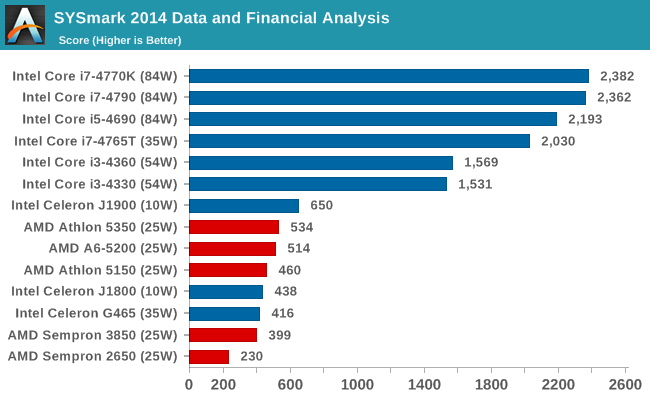
Point Calculations – 3D Movement Algorithm Test: link
3DPM is a self-penned benchmark, taking basic 3D movement algorithms used in Brownian Motion simulations and testing them for speed. High floating point performance, MHz and IPC wins in the single thread version, whereas the multithread version has to handle the threads and loves more cores.
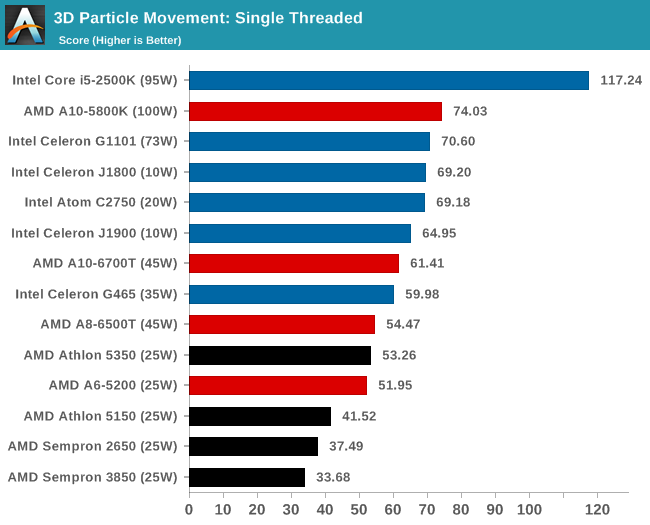
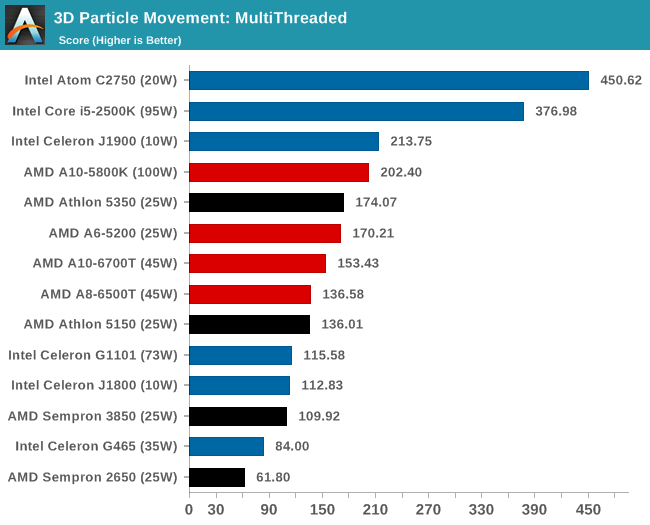
OpenCL – CompuBench: link
CompuBench is an OpenCL and RenderScript benchmark designed by Kishonti for both CPUs and any GPGPU capable device. While it offers almost two dozen tests, we select the more real-world tests in terms of fluid simulation and image analysis benchmarks.
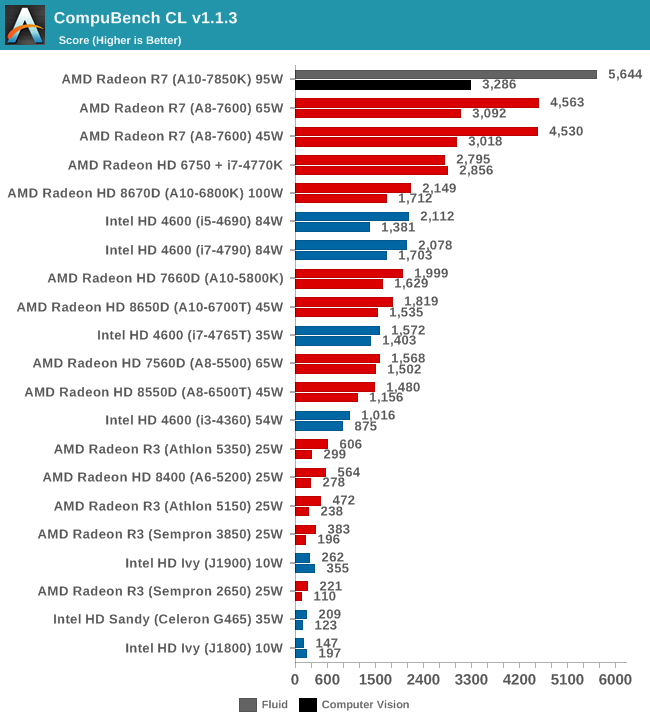










87 Comments
View All Comments
mikk - Thursday, May 29, 2014 - link
G1820 is missing or at least a cheap Haswell Pentium.hojnikb - Thursday, May 29, 2014 - link
Yes that would be really great, since those chips are price about the same.jospoortvliet - Sunday, June 1, 2014 - link
These do use far more power.On that note, why on earth doid the reviewer compare power usage over idle (never seen that particular metric at anandtech?!?) While not mentioning the idle power (according to various other sites, the amd's sport significant lower idle power). I don't like to think so but this is probably the only power metric to make the atoms look remotely good... Why was it chosen?
savagemike - Thursday, May 29, 2014 - link
I agree completely. If I were building a budget desktop right now that is exactly the chip (or similar) which I'd be comparing these to.MikeMurphy - Thursday, May 29, 2014 - link
I can buy a G3220 Haswell Pentium running at 3.0ghz for $60. I was really hoping this would make it into this review!!Stuka87 - Thursday, May 29, 2014 - link
The G3220 is a 53W chip. These are 25W chips. They do not compete with each other.HisDivineOrder - Friday, May 30, 2014 - link
Atom chips are 10W chips. These Semprons are 25W. They do not compete with each other.See how that doesn't impact the fact that people are talking about more than just wattage? ;) Some people just want to know what the best VALUE is per dollar and these low end options are all in the running.
Why limit yourself to just discussing wattage-appropriate? Especially when those Semprons are already over twice the Atom chips in terms of watts.
bsim500 - Friday, May 30, 2014 - link
"The G3220 is a 53W chip. These are 25W chips. They do not compete with each other."Intel's TDP is way overstated on its dual-cores. My "55w" i3 pulls about 32w in reality (measured at the wall, not calculated). I've seen Haswell Pentium's that are sub-30w, (full speed not the slow "T" variants). They are very definitely in the same bracket. In fact, at stock 3.4GHz, with a -0.15v undervolt, I can get my "77w" i5-3570 down from a measured 59w (1.1v) to around 47w (0.95v). At 3.0GHz at 0.83v, you're looking at 36w 4T / 25w 2T (for an i5). AMD's Kabini's are still on 28nm vs Intel's 22nm, and you'd be surprised just how low you can go with undervolting the latter's "big cores".
silverblue - Friday, May 30, 2014 - link
The point is moot as AMD is known for overvolting its processors; an article on Kabini would be very interesting.lyeoh - Sunday, June 1, 2014 - link
Which is why this article needs some actual power consumption benchmarks.